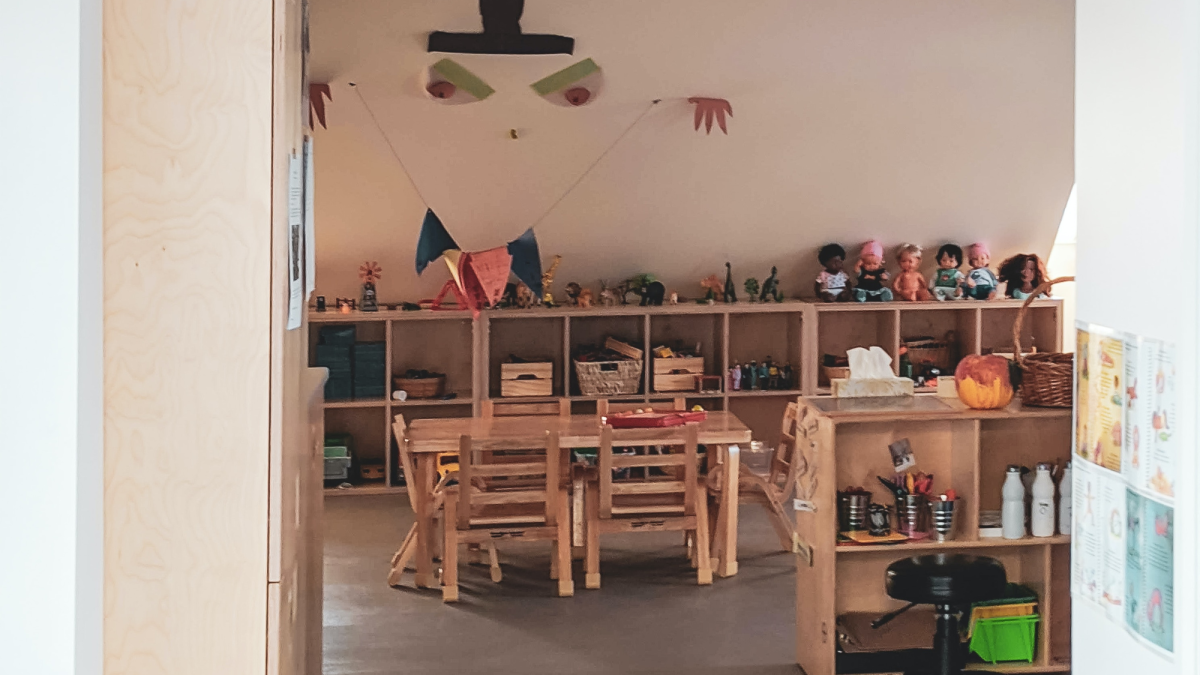Infants' Classroom: Encouraging Communication With Parents

Checklist for Welcoming Artifacts
These simple items can enhance the friendliness of the classroom doorway.
- Picture collage of recent activities
- Student painted collage or tapestry
- Decorated mailboxes
- Suggestion box/ mailbox
- Table with softly colorful decorations
- Posters displaying recent activities
- Space for moving around or multiple parents to stand
- Small cubbies and hooks for bags decorated individually
These ideas work for more than the infant's classroom. Each classroom should make the parents feel their child is special.
Daycare Classroom Keys to Successful Interactions
Parent-teacher communication requires four strategies, included in the daily routine, to encourage and maintain successful parent-teacher relationships.
Learn About The Family
The first strategy needed is a universal rule for the education field: learning about the family. Learning about the family ensures the teacher discovers any facts essential to the welfare of the child. The dissimilarities of families embrace the diversity in the classroom, even in the infant room. Having the ability to accept these differences and integrate them into the classroom and lessons uses the skills of tact and empathy.
Cultural, structural and temperamental differences in families can predict or evoke different reactions and responses from the students. It is crucial to remember that these differences are what make each child unique and each family unit the core of the child’s world.
Environment and Engagement
The second strategy is everyday actions that ensure the family feels welcome in the classroom. The environment, engagement, and lessons can convey a positive and welcoming atmosphere to the parents. The parents of infants often feel uncomfortable leaving their child in daycare. They may feel guilty for leaving their child with a stranger. They may even feel the teacher is not as capable as they in the care of their child.
Examples
- The first space the parents see should be a visible example of the love and warmth the children experience each day. Family mailboxes and poster boards of past projects should introduce parents to the classroom rather than a row of clunky cubby holes or a sign-in sheet. The space around the door should be open and decorated with heartwarming artifacts showcasing their child’s time is well-spent. Such examples illustrate the teachers’ attentions are clearly on the children’s development.
- Handprint pictures, a collage of pictures of the children playing together, or a warmly decorated sign-in table with decoupaged baby art permanently entombed on the tabletop should be the first thing the parents see. See the checklist above for more ideas.
- A copy of completed lesson plans, written in a friendly, easily understood language without the use of ‘teacher speak,’ should be given to the parents weekly. This communication model is typically a newsletter, but it does not have to be. The lesson plan can be used to enlist the parents in the decision making about what their child does daily. Sending out questionnaires can show parents that their opinion is valuable to the teachers. A suggestion box is another form of communication but not as direct and personable as communication should be.
... Continued below
Engaging Parents in Outdoor Activities

Daily Information Exchanges
The third strategy is to encourage the parents’ engagement in daily exchanges. Including the parents in activities, such as reading time or lunch, allows parents to participate much like they do at home, breaking the barrier of institution versus home. Inclusion also gives the parents bonding time during lunch breaks and lets them meet their baby’s friends.
Writing down, on daily schedules, the child’s intake and bodily functions allows the parent to monitor the child while they are not there for future doctor visits in case of illness or regular check-ups. Make sure to discuss the record rather than simply allowing the parent to scan and rush off, unless it in their culture to do so. Discussing the daily record will show the parents that it is not just numbers or markings on a piece of paper but that the teacher paid attention to their child’s needs.
Unique Personal Challenges
The final strategy for successful communication with parents is remembering that each individual has unique challenges. Cultural differences can cause stress for the parents because they were raised with different values and procedures. Discussing these differences on the first day and thoroughly explaining the lesson plan, as well as the regulations behind certain actions with which the parent disagrees, can assuage many future issues. Understanding the culture of the family gives the teacher insight into any upsetting issues or lessons that may need altered for inclusion.
- Culture
Understanding the family and differences therein will also help if the child had responses or reactions to schedules and activities that vary from their normal home behavior. For example, a child raised by certain European families may have a later bedtime than those of American families because of the habits of Europeans. Understanding the challenge of changing their home habits to a new culture will ensure an easy transition for the child.
- Temperament
The challenges of a temperamental child can become a barrier between teacher and parent. Discussion of the issue must be handled with empathy and understanding. Validate the parents’ love and skills without placing blame or undermining their actions. Ask questions that do not create resentment in the parents such as “Susie was a little fussy today, did she wake more than usual last night?” Rather than “Did Susie not get to sleep on time last night?”
Conclusion
Successful parent-teacher interactions on a daily basis create a warm and comfortable infant classroom for all involved. Remember the child is the main concern and all policies of the center must be followed, but the parent must feel welcome and safe, or they will go to a center that can fulfill that need.
Infant Classroom Poll
How often do you change your bulletin board?
References
My experience and years of education and teaching are a real-life reference for this article. Parents responded to my personality and constant communication.
The Creative Curriculum by Diane Trister Dodge, Laura J Colker and Cate Heroman
Infant Classroom Behavior: Needs, Perspectives and Strategies by Sue Roffey and Terry O'Reirdan
© 2014 alfetherlin








